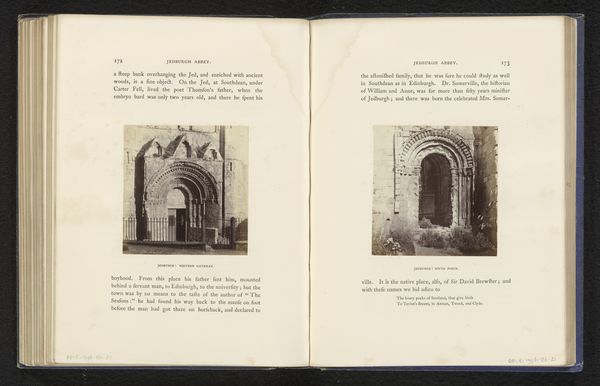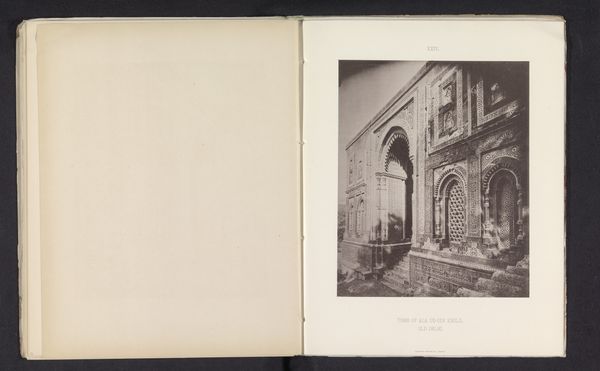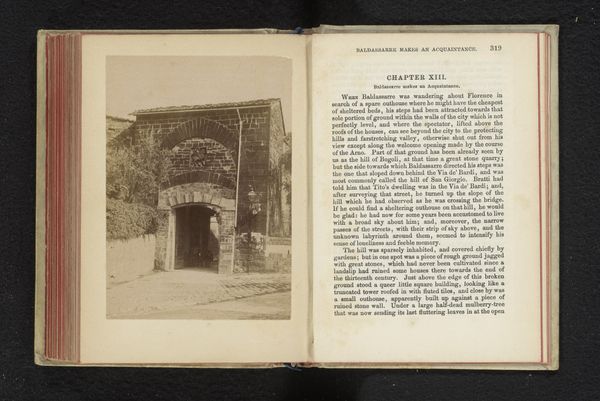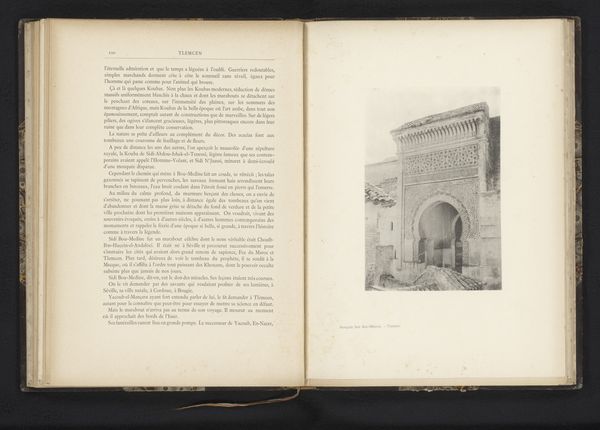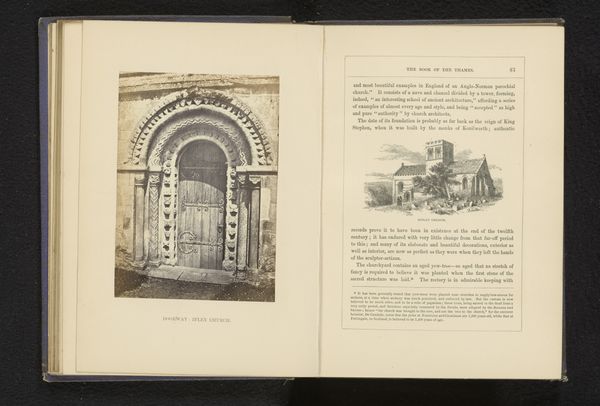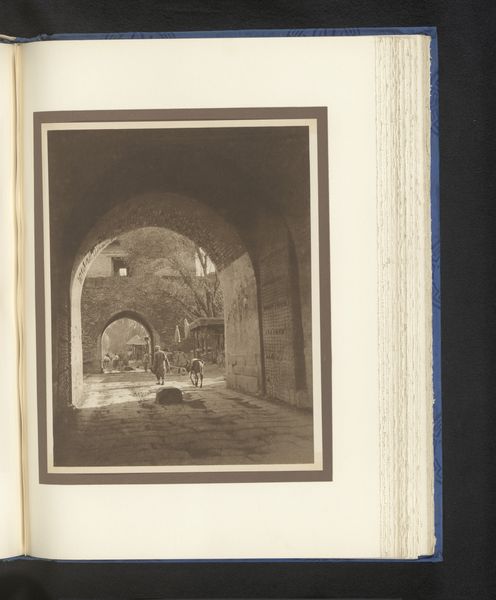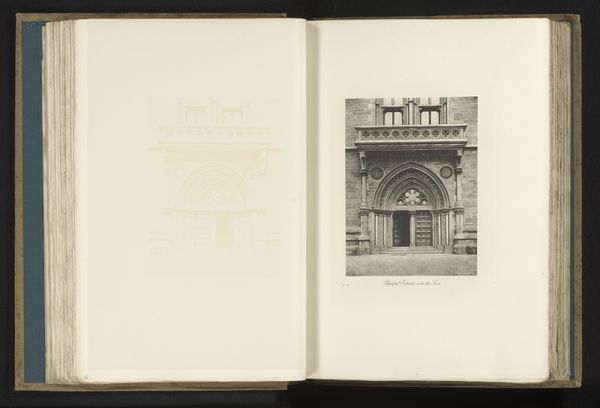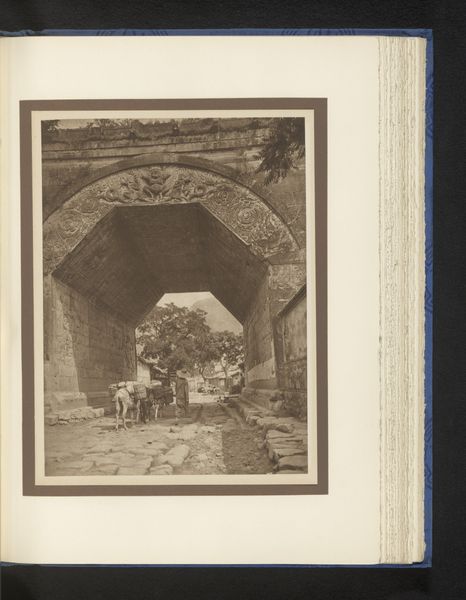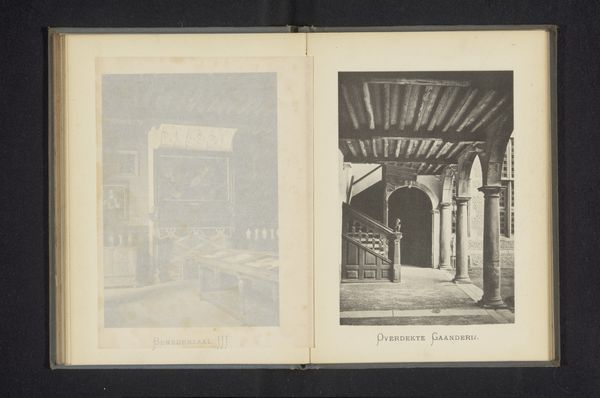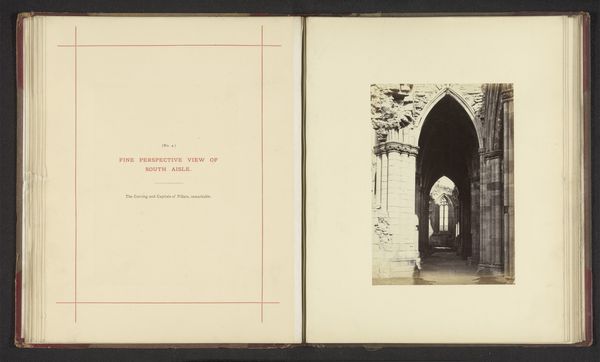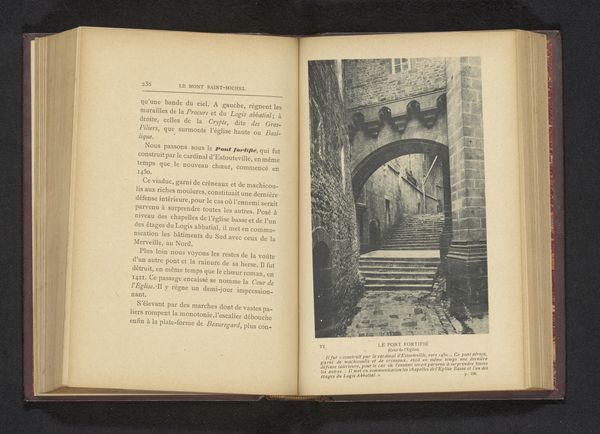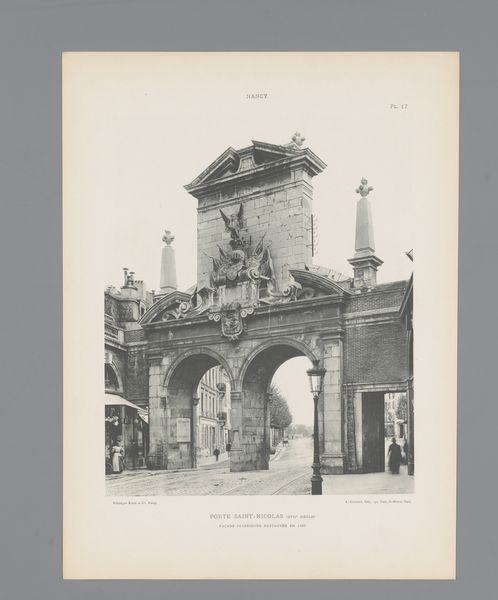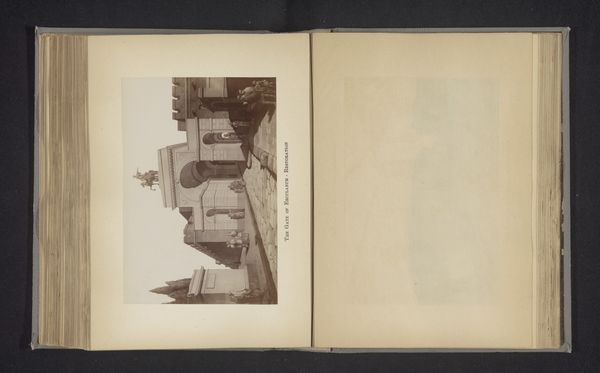
Gezicht op de Kiu-Young poort en Gezicht op poorten bij de tempel van Confucius te Peking before 1897
0:00
0:00
print, photography, architecture
# print
#
asian-art
#
photography
#
cityscape
#
architecture
Dimensions: height 103 mm, width 156 mm, height 103 mm, width 156 mm
Copyright: Rijks Museum: Open Domain
Curator: This intriguing photographic print, predating 1897, showcases two views of Peking by Jules Royer. The first, the Kiu-Young gate, and beneath it, gates near the Temple of Confucius. Editor: I am struck by how monumental yet simultaneously fragile the structures appear in the monochrome. A profound sense of history pervades. Curator: The choice of monochrome really emphasizes the stark geometry. Consider the upper image, for example, the Kiu-Young gate: its perfectly framed, almost brutalist archway against the diffuse backdrop of what seems to be an emerging village. It’s less a romanticized cityscape, and more a rigorous study in contrasting forms. Editor: Absolutely, and the symbolism there is fascinating! The gate itself, worn yet stoic, guarding, protecting... a threshold, physically, but also metaphorically to another era, another way of life. It seems to yearn for preservation. The stark difference between the weathered stone and, as you say, the indistinct future settlement creates a visual narrative ripe for interpretation. Curator: Precisely, and the photographic medium, almost clinical in its objectivity, further underscores this dialogue. The composition avoids overt sentimentalism, demanding we see the underlying structure. Observe the lower register, a suite of triple arches exhibiting slight degrees of decorative differentiation—a subtle semiotic gesture. Editor: I find my eye drawn to the emptiness within those arches of the Temple of Confucius. Arches are commonly perceived as a symbol of hope, unity... Yet here, we are presented with unoccupied doorways to enlightenment. Perhaps inviting contemplation on philosophical heritage at risk. Curator: A compelling observation! Perhaps Royer is gesturing towards a fracturing, or the precarity of traditions. These rigid structures seem more a skeleton than a solid structure. Editor: This photographic juxtaposition yields a potent symbolic field, capturing not just a location, but the tensions inherent in cultural transformation. Curator: Yes, and returning to our starting point, by distilling the views down to pure visual components, the geometry itself echoes cultural shifts and endurance. Editor: Leaving us to reflect on our modern position, the echoes of culture through architecture, and to contemplate transitions through thresholds.
Comments
No comments
Be the first to comment and join the conversation on the ultimate creative platform.
